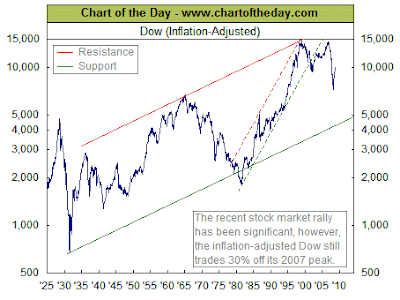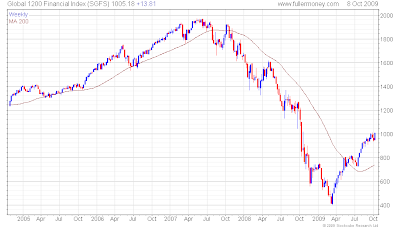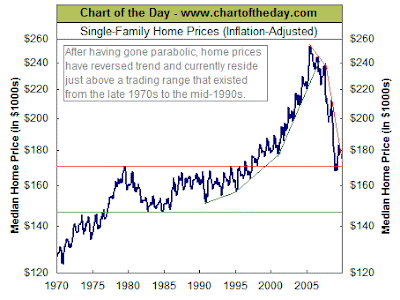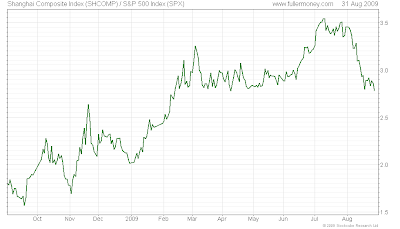WSJ: Earlier during this interview, you mentioned that the roots of the problem have not been properly addressed or even no at all?
M&B: Let me start by saying that I have sympathy for the Austrian school of economics but also believe that governments and central banks had to act after having closed a blind eye (or even encouraged directly or indirectly) on an irresponsible behavior (besides their even more irresponsible behavior); they however stopped short (and by a long margin) from making sure the magnitude of this crisis will not happen again (we will get other crises, but please let’s lay the ground to avoid what is avoidable) since policy makers are quick pointing the finger at scapegoats but not at themselves, and they bear their part of responsibility which is not small.
To me, the root of the problem is over-indebtedness, quasi-exclusively in the West (and mainly in the US) and Dubaï (in 2006 I was asked by a friend about investing in a real estate fund focusing 100% on Dubaï: I just told him to stay away; too many square meters built for too few buyers at the end and prices going up too far too fast), from consumers, governments (national and local) and banks; corporations were not so badly indebted.
WSJ: How did this become possible?
M&B: It became possible because of the lack of accountability and short sighting (you were better making a succession of one off deals instead of building a business). Banks magnified the problem but did not cause it: they use a favorable environment to substantially increase their Return On Equity (ROE) via leverage and proprietary trading. It is easy to directly or indirectly encourage consumers to over-consume and forget saving: true, people have been encouraged by the irresponsible behavior from banks and, overall, governments (not least in Europe). Accountability is what will ensure we learn from past mistakes:
1)
Accountability from Boards of Directors: you probably noticed that just a few chairmen/CEOs were fired (and not many) whilst boards remained more or less the same. They are the one that vested chairmen/CEOs packages/bonuses, strategy, etc.
2)
Accountability from regulators: after all it is the SEC that did not act on naked shorts for so long (the SEC was not worried when banks were shorting naked small and mid cap companies, resulting in outstanding shares representing over 100% of the issued capital!!).
Capital ratios were not set up by banks, but by Governments via Basle accords.
Accounting rules were no set up by banks either, but by regulators. Yes, banks lobbied: so what? Do regulators/policy makers need to follow what lobbyists say?
3) Accountability from Central Banks: 2 months after taking the helm at the FED, in 1987, Greenspan wide opened the flow of money. There was no will to seriously tighten the belt. LTCM was too big to fail? This was opening the door to the next "too big to fail".
4)
Accountability from politicians: they have always been (voluntarily) dead wrong in projecting the economy and have not laid the foundation of a sustainable growth: look at (pre financial crisis) the state of public debt, budget deficits, pension disarray and health system decay/cost in the Western world.
5)
Accountability from consumers: how can a consumer with some sanity borrow at 15%, 16% or 17% to buy a plasma screen or whatever consumer good, or use a credit card for the same purpose when official CPI is in the 2-3% range? How can someone borrow 100% for a house, or worse draw equity out of it. The western world, and the US in particular, have lived on steroids called over indebtedness.
6)
Accountability from media: most of them are just
relying information (and the more sensational, the better, whether true or not, important or not, what matters is the scoop)
without investigating. Soros says something? It must be true. Greenspan says something? It must also be true. Don't question please, or mildly. The way the media reported the "success" of the G20 summit in London or Pittsburgh is shameful: as if the tax haven scapegoat (oops! depending if you are a large country or not, you are on the grey list or on the white list - Delaware, Macao, etc.) or the bankers' bonus were at the root of the crisis and solving these “identified” problems were key to lay down the foundation of a long term sustainable growth. They were just communication aimed at the man in the street (should I say the voters) and did not bring any viable and sustainable solution.
The important point is that, what
we are witnessing is the brutal adjustment to this over indebtedness. The economic growth of the past 20 years was largely built on money creation by central banks and speed of velocity by commercial banks. Did banks (and the financial sector as whole) create this background? No! They took advantage of an existing framework (in some instances they convinced regulators and policy makers to shape it in their favor) to maximize profits.
We DO NOT need more regulation but better regulation.
The previous "new paradigm" in many ways hid the relative demise of the Western world towards Emerging markets, and among them the largest:
China.
The economic and financial fragility of the West came to light with this crisis.
This will sooner or later result in a confrontation with the West since both sides are going to be increasingly at odd on many subjects, starting with a competition for the same limited resources to spur their growth and at least maintain (the West) / foster (emerging markets – haven’t they already emerged?) in real terms the standard of living of their populations (I unfortunately have doubts for the Western world to rebound looking 15 years forward with all the challenges we are facing - public debt and budget deficits, pensions and the health service, to name a few).
This is already the case in some parts of the world ( starting with Africa - Soudan for example)
spilling over into confrontation at a geopolitical level.
This crisis has revealed at least one thing for the ones who were not aware of it:
this shift of power is unstoppable in the current environment. People of the West need to point the finger at the right responsibilities to make sure that, we, in the West, will be able to reshape the economic, financial and geopolitical environment
to our advantage: don't be mistaken, we are not in a nice people world, but a world of domination (as it has been for a couple of thousand years and longer). there, too, there is not, and
there will no be, a new paradigm: either you are on the side of the dominant or on the side of the dominated.
P.S. Wait for the next bubble to deflate,
the Mother of all Bubbles: Government debt
Source:
The Economisthttp://www.economist.com/user/Markets%2Band%2BBeyond/comments








































